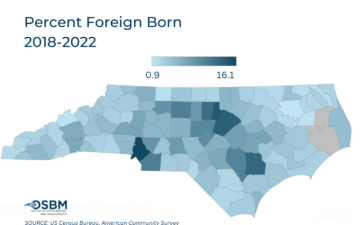Completing the FAFSA is strongly and positively associated with postsecondary enrollment. An analysis of data from the National Center for Education Statistics shows that 88% of high school seniors who completed a FAFSA in 2012-13 had attended college by February 2016, compared to 49% of students who did not file a FAFSA.
Increasing FAFSA completion is also a fundamental step in North Carolina’s efforts to meet the statewide education attainment goal. But how could school districts best track their students’ progress and increase FAFSA participation?
That was the question at the heart of our recent partnership with myFutureNC to develop a NC First in FAFSA tracker, which supports school districts and schools in accessing FAFSA completion data. The tracker provides educators across the state with visualizations that can be used by counselors and other college access professionals to better target their efforts.
To develop the FAFSA tracker, we first completed a comprehensive environmental scan of how other states designed their trackers. We then worked in partnership with myFutureNC, North Carolina State Education Assistance Authority (NCSEAA), and school counselors to understand their needs, and developed a tool that allows school counselors and administrators to view their current estimated completion percentages, track their progress over time, compare to other schools, and even view district level totals.
In addition, we created comprehensive documentation and FAQs for the site.
The dashboard allows school districts and regions to assess their FAFSA completion rates and make plans to better reach more students across the state. As of January 15, 2021, we are well on our way to reaching the 65% goal FAFSA completion rate with 35.9% of high school seniors in NC public high schools completing the FAFSA. That’s just over 38,000 high school seniors in NC who have already completed the FAFSA and are on their way to a high-quality postsecondary credential or degree.
myFutureNC
To help visualize FAFSA completion rates

Last week, the U.S (United States). Census Bureau released 2023 county population estimates. These annual estimates tell us how county populations in North Carolina have changed over the course of a year: in this case, between July 1, 2022 and…

Deciding which educational pathway to pursue is often a daunting decision for a high schooler transitioning to postsecondary education. There are many questions a student must ask. Do I want to pursue a credential or a degree awarding program? What…

Dr. Michael Cline is the state demographer for North Carolina at the Office of State Budget and Management and has given us permission to re-post his content here. The original version of this piece is here. The foreign-born population in…
Your support is critical to our mission of measuring, understanding, and predicting population change and its impact. Donate to Carolina Demography today.